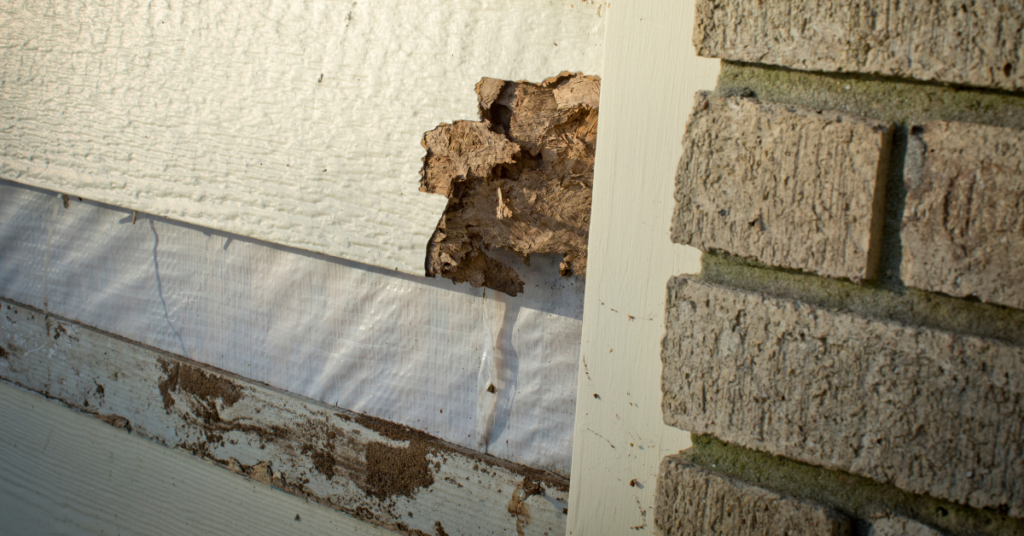
As winter approaches in the Willamette Valley, it’s essential to make sure your home’s exterior is ready to handle the season’s colder temperatures and increased moisture. At Stutzman & Kropf, we know that siding is your home’s first line of defense, protecting against rain, snow, and wind. For nearly 50 years, our siding installation services have ensured local homes stay protected through all seasons. A bit of seasonal maintenance goes a long way toward keeping your siding durable and beautiful all year round. Let’s look at some simple but important steps you can take to prepare your siding for winter.
1. Start with a Thorough Inspection
A proper siding inspection is the first step in winter preparation. Check for any signs of damage that could worsen in cold, wet conditions, such as cracks, gaps, or loose panels. Examine every side of your home, paying particular attention to the areas around windows, doors, and edges where water might seep in.
Look for these common signs of wear:
- Cracks or Chips: Small cracks can become larger under the strain of winter weather.
- Loose or Warped Panels: Even slightly loose panels can allow water to seep behind them, leading to mold or rot.
- Water Stains or Discoloration: Discoloration may indicate that water is already penetrating, which should be addressed quickly.
If you spot these issues, addressing them before winter sets in will help protect your home from moisture damage and reduce the likelihood of needing major repairs later on.
2. Clean Away Dirt, Debris, and Mold
Cleaning your siding may not seem urgent, but it can prevent serious problems. Over the warmer months, dirt, leaves, and other debris can settle on your siding. If left to sit through winter, these particles can cause staining or even contribute to mold growth as the temperature drops and moisture increases.
Here’s a simple cleaning process for different siding types:
- Vinyl Siding: Use a soft brush or cloth and a solution of water and mild detergent to clean vinyl siding. Avoid using a pressure washer directly on vinyl, as it can force water under the panels.
- Fiber Cement Siding: Fiber cement siding is low-maintenance, but mold and mildew can develop over time. A scrub brush with warm, soapy water should be enough to remove surface stains.
- Wood Siding: Wood siding is more vulnerable to moisture, so clean it carefully to remove any mold or mildew. We recommend a gentle scrub and avoiding excess water to keep wood from absorbing moisture.
Once cleaned, your siding will be ready to hold up better against winter’s challenges.
3. Check and Refresh Caulking
Sealing any cracks and gaps around windows, doors, and edges will keep your home warmer and protect your siding from water damage. Inspect your caulking carefully, especially in areas where different materials meet, such as between siding panels and window trim.
Applying new caulk where old caulk has worn away can prevent drafts and stop water from seeping in. A few tips for effective caulking:
- Use Exterior Caulk: Be sure to use a weatherproof exterior caulk that’s designed for siding materials.
- Check for Consistency: Caulking should be applied evenly for the best protection.
- Inspect Annually: Caulk can shrink or crack over time, so make caulking inspection an annual part of your maintenance routine.
4. Repair Minor Damage Right Away
If you’ve spotted small chips or cracks in your siding, repair these areas before they become bigger issues. Even a small area of damage can allow water in, which can then freeze and expand during colder weather, creating larger problems. Depending on your siding material, here are some common DIY repair tips:
- Vinyl Siding: Small cracks or holes can be filled with a vinyl patching compound.
- Fiber Cement Siding: Use an exterior-rated, water-resistant filler for minor cracks or chips.
- Wood Siding: Wood filler can patch small holes, but larger repairs or splits may require a professional.
Some repairs are best handled by professionals, especially if you have extensive damage or areas that are hard to reach. At Stutzman & Kropf, we’re here to help with any repair needs to keep your siding looking great.
5. Consider Insulating for Extra Efficiency
Siding acts as an important insulator for your home, keeping it warmer during the winter and cooler in summer. If your siding doesn’t already have an insulation layer, adding one or upgrading your current insulation could improve your home’s energy efficiency, saving you on heating costs.
There are various ways to add insulation to your siding setup, including insulated vinyl siding or adding foam insulation panels behind your existing siding. Proper insulation helps maintain a consistent indoor temperature and keeps cold drafts out, making a noticeable difference in comfort.
6. Plan for a Professional Siding Inspection
While regular homeowner maintenance is crucial, scheduling a professional inspection can uncover hidden issues and offer peace of mind. At Stutzman & Kropf, we bring decades of experience with siding tailored to Oregon’s unique climate. Our team can assess your siding’s condition, advise on necessary repairs, and ensure your home is prepared for winter. For a detailed look at when it’s best to repair or replace your siding, check out our guide on siding repair vs. replacement.
Get Your Siding Ready to Weather the Winter
Preparing your siding for winter may seem like a small task, but it’s a big step toward protecting your home through the colder months. By taking the time to inspect, clean, seal, and repair, you’re not only extending the life of your siding but also enhancing your home’s protection and appearance.
If you’d like professional assistance with your winter siding preparation, our team at Stutzman & Kropf is ready to help. From detailed inspections to expert repairs, we’ll make sure your siding is up to the task of keeping your home cozy and dry all winter long. Reach out today to schedule an inspection or to learn more about how we can keep your siding in prime condition year-round.
